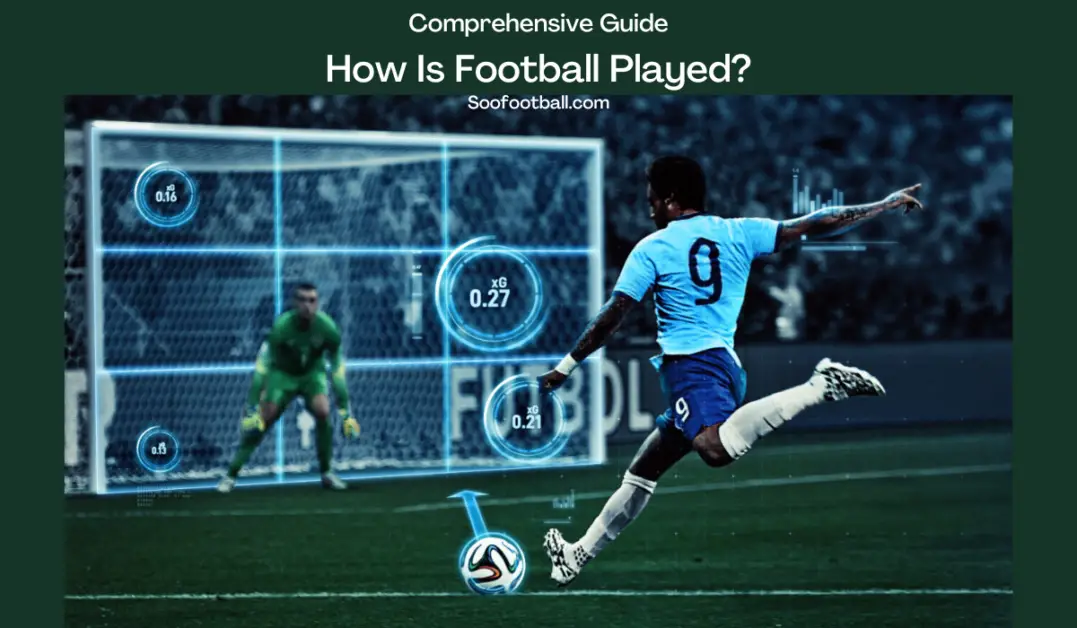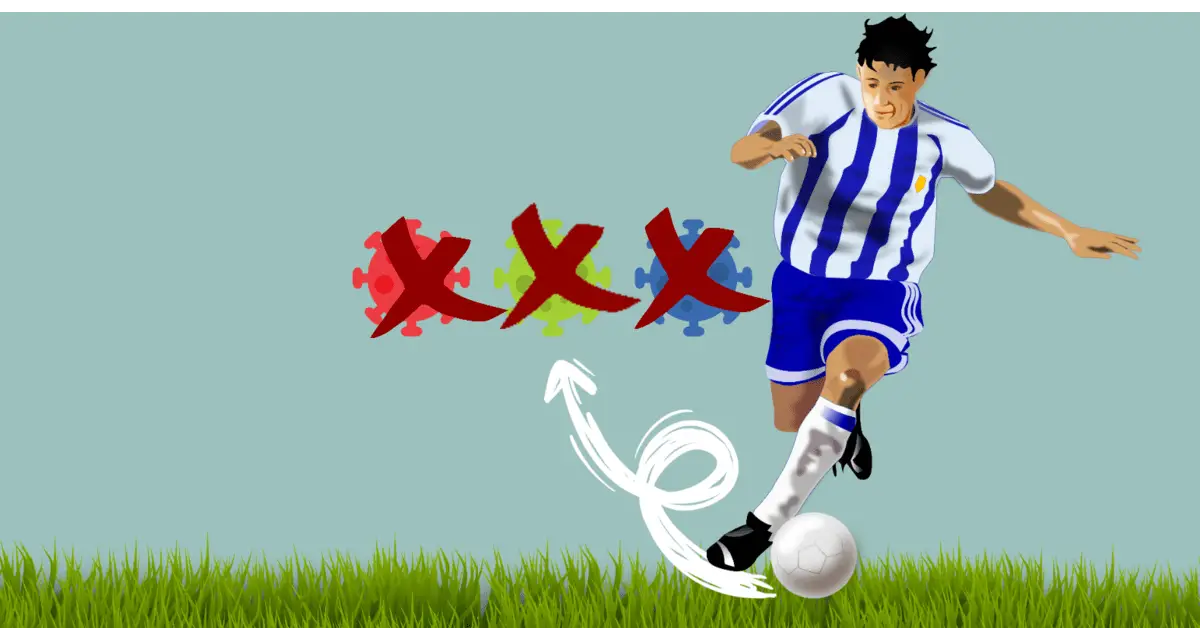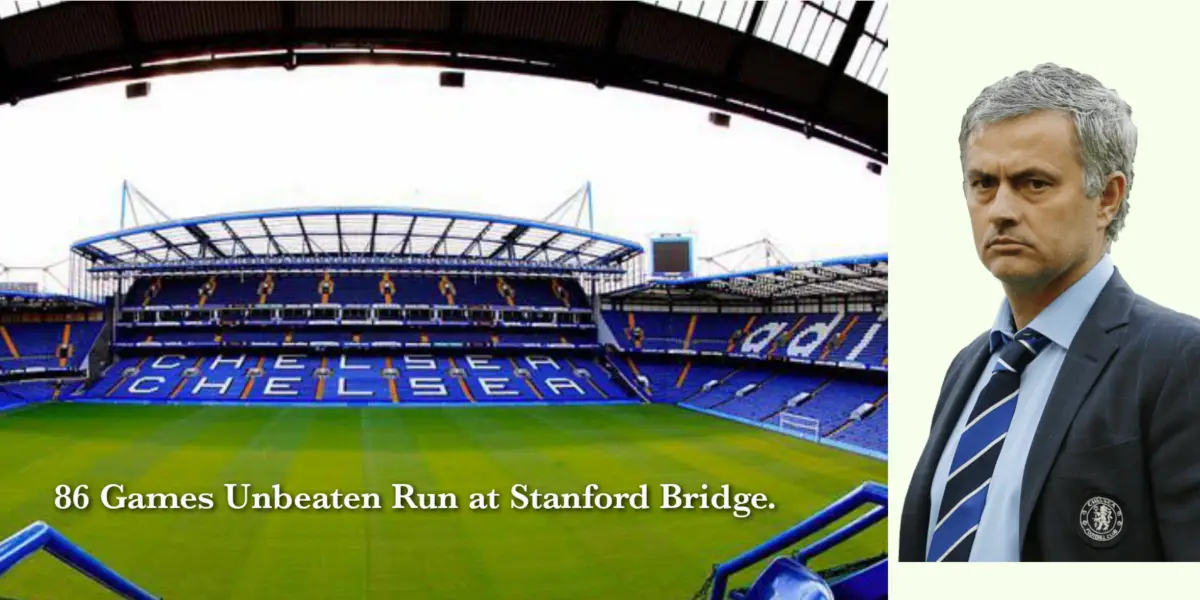This article is the ultimate guide on how football is played worldwide. Here, we’re not talking about American football, but the globally beloved sport known as soccer. So, if you’re ready to go into the world of passes, goals, and penalty kicks, you’re in the right place.
Football, or soccer as it’s known in some parts of the world, is not just a game; it’s a cultural phenomenon. Played and cherished by millions, if not billions, it has the power to unite people across continents and spark emotions that resonate in the hearts of fans.
Soccer, or football, is a sport that transcends language barriers. When a goal is scored, the cheers echo the same joy whether you’re in Rio de Janeiro, Barcelona, or Tokyo. It’s a beautiful game with a simplicity that hides its strategic depth.
Now, you might be wondering, why bother understanding how football is played? Well, that’s where this guide comes in. Whether you’re a newcomer trying to grasp the basics or a seasoned fan looking to deepen your knowledge, this comprehensive guide is your go-to resource.
The information you’ll find here is not your typical run-of-the-mill guide. This is a detailed exploration that you won’t easily find elsewhere on the internet. We’re about to unravel the mysteries of the game, breaking down rules, strategies, and everything in between.
As we navigate through this guide, we’ll cover the fundamental rules that govern the game, explore the evolution of soccer, dissect player positions and formations, unravel the magic behind scoring, and even touch on the emotional and social aspects that make soccer more than just a game.
This isn’t just about the thrill of goals or the elegance of a well-executed pass. It’s about understanding the heartbeat of a sport that has become a way of life for many. So, fasten your seatbelts as we embark on a journey to demystify the beautiful game and discover the reasons why it captivates millions around the globe.
History of Football
Football, a sport that has captured the hearts of millions, has a history as rich and diverse as the cultures it unites. To truly understand how football is played, we must embark on a journey through time, exploring its origins, evolution, and the key milestones that have shaped the game we cherish today.
Origins of Football: The Birth of a Passion
The roots of football can be traced back centuries, with various cultures contributing to its development. The earliest forms of the game were often unstructured and lacked standardized rules. Ancient civilizations like the Greeks and Romans engaged in games involving a ball, and similar activities were found in ancient China and Japan.
However, it was in medieval Europe that early versions of football began to take shape. These “mob football” games were often chaotic, with entire villages participating in matches that could span entire towns. The objectives were simple – get the ball to a designated point by any means necessary.
Evolution of the Game: From Chaos to Structure
As the centuries passed, football underwent a gradual evolution, transitioning from chaotic street games to more organized contests. It was in 19th-century England that crucial steps were taken to standardize the rules. The establishment of clear guidelines marked the birth of modern football.
The creation of the first official football association in 1863, known as The Football Association (FA), played a pivotal role. The FA’s rules became widely adopted, providing a foundation for the game’s structure. The evolution continued with the establishment of national football associations worldwide.
Key Milestones in Football History: Shaping the Global Game
1. The First International Match (1872): The match between England and Scotland marked the beginning of international football, setting the stage for the global competitions we witness today.
2. FIFA’s Inception (1904): The formation of the Fédération Internationale de Football Association (FIFA) brought nations together under a single governing body, fostering international collaboration and competitions.
3. The World Cup Era (1930): The inaugural FIFA World Cup in Uruguay marked a watershed moment, elevating football to a global spectacle and introducing the concept of national teams competing for supremacy.
4. Technological Advancements: From the introduction of goal-line technology to video assistant referees (VAR), advancements have been crucial in ensuring fair play and accurate decision-making.
5. Pioneers and Icons: The likes of Pelé, Diego Maradona, and Lionel Messi have become football icons, leaving an indelible mark on the sport’s history.
Basic Rules of Football
Understanding the fundamental rules of football is crucial in deciphering the essence of how football is played. Let’s break down the key components that govern the game, from the overarching objective to the intricate details of team composition and game duration.
The Objective of the Game: Scoring and Victory
At the heart of how football is played lies a simple yet profound objective – to score more goals than the opposing team. A goal is scored when the ball crosses the goal line between the goalposts and beneath the crossbar. The team with the most goals at the end of the match emerges victorious.
The Playing Field: Size & Dimension
The football pitch, a rectangular field, is meticulously laid out with dimensions standardized across the globe. Its length typically ranges between 100 and 110 meters (328 to 360 feet), while the width falls within 50 to 100 meters (164 to 328 feet). These dimensions provide the stage for the beautiful game, marked with clear boundary lines and a central halfway line.
At each end of the pitch stand the goals, the gateways to scoring. Standardized worldwide, the goalposts are positioned at the centre of each goal line. The width of the goalposts is 7.32 meters (24 feet), and the height, extending from the ground to the crossbar, is 2.44 meters (8 feet).
Understanding these dimensions is fundamental for players, referees, and fans alike, as they define the scoring zones and guide the strategies employed on the field.
Learn more about the standard football goal post size and dimension.
Team Composition
Football is a team sport, and effective team composition is the key to success. Each team typically consists of 11 players, including one goalkeeper. Players are strategically positioned into formations, each with distinct roles – defenders, midfielders, and forwards. A harmonious balance among these positions is crucial for a team’s overall performance.
Duration of the Game
A standard football match is divided into two halves, each lasting 45 minutes, with a 15-minute halftime interval. In some cases, extra time may be added to resolve ties in knockout competitions. The clock is stopped only for significant stoppages, such as injuries or substitutions, ensuring a fluid and continuous flow of play.
Starting and Restarting Play
The match kicks off with a coin toss, determining which team starts with possession. Play begins with a pass from the centre spot, and the ball is in play as soon as it is kicked and moves forward. Restarts occur after stoppages, with methods like throw-ins, goal kicks, and corner kicks. Free kicks and penalty kicks also play a role in restarting play, each with its specific rules and conditions.
In essence, the basic rules of football establish the framework within which guides how it is played. From the excitement of scoring goals to the strategic prowess of team composition, every element contributes to the symphony of football. As we delve deeper, we’ll explore player positions, scoring techniques, and the art of defence, offering a comprehensive guide for both novices and seasoned fans.
Equipment Needed In Football
In our quest to unravel how football is played, it’s essential to explore the gear that adorns players and the equipment that defines the sport. From the central role of the ball to the attire donned by players, the goalposts standing tall, and the tools of the referee, each element plays a crucial part in shaping the essence of the game.
The Ball
At the core of football lies the ball, the pulsating heartbeat of the game. Crafted with precision, the standard football is a spherical wonder, typically made of leather or synthetic materials. Its design ensures a balance between durability and playability. The weight, circumference, and pressure of the ball are regulated to maintain consistency across matches, ensuring a fair and uniform playing experience.
Player Gear
As players step onto the pitch, their attire is more than a uniform; it’s a functional ensemble designed for optimal performance. Jerseys, typically short-sleeved and numbered for identification, form the outer layer.
Paired with shorts and socks, players enjoy the freedom of movement while adhering to the team’s colour scheme. Cleats, specialized footwear with studs, provide traction on the field, enabling precise movements and swift turns.
Goalposts and Nets
The goalposts, standing as sentinels at each end of the pitch, define the scoring zones. Crafted with precision, these structures are usually made of metal, providing stability and durability.
The crossbar, connecting the goalposts at the top, sets the threshold for scoring. Nets, suspended behind the goalposts, catch the ball when a goal is scored, adding a visual spectacle to the triumphant moment.
Referee Equipment
Ensuring the smooth flow and fairness of the game falls into the hands of the referee, equipped with specific tools. The referee sports a distinctive jersey, often in contrasting colours to the teams, ensuring easy identification. A whistle becomes the arbiter’s voice, signalling starts, stops, and fouls. Additionally, a set of coloured cards – yellow for caution and red for expulsion – serves as a visual language for managing player conduct.
Detailed Explanation of Scoring in Football
In football, scoring is the big moment everyone cheers for. Let’s take a closer look at what scoring means, how it’s different from points, and what happens when teams end up tied.
To explain how football is played, Imagine you’re on the field, and you manage to kick the ball past the goalkeeper, and it goes between the goalposts and under the crossbar – that’s a goal! Scoring goals is like hitting the jackpot in football. It’s not just about winning; it’s about celebrating a moment of skill and teamwork.
Every time a team puts the ball in the other team’s net, they get a goal. The team with the most goals at the end of the game wins. So, the more goals, the better! Goals are like the magical points that make football matches exciting.
In some games, you hear about points, but in football, it’s mostly about goals. Teams don’t collect points during a match like in some other sports. Instead, they focus on scoring as many goals as possible. The scoreline tells you how many goals each team has – it’s that straightforward.
But what if both teams end up with the same number of goals? That’s when tiebreakers come into play. Imagine a game ending 2-2. To decide on a winner, we look at goal difference. Goal difference is the gap between the number of goals a team scores and the number they concede (let in). If that’s the same, we check who scored more goals overall.
In some cases, like knockout competitions, there might be extra time – a bit more playing to break the tie. If it’s still tied, penalty shootouts happen. These are like sudden-death rounds where one team wins, and the other doesn’t. It’s all about finding a way to break the deadlock and have a clear winner.
Player Positions and Formations Explained
Let’s dive into the intricate dance of player positions and formations – the tactical puzzle that gives each team its unique identity and changes how football is played in respective teams. From the guardian of the goal to the goal-scoring maestros, every player has a role, and the way they’re arranged on the field forms the strategic backbone of the game.
Goalkeeper – Imagine a fortress with a guardian – that’s the role of the goalkeeper in football. Positioned right in front of the goal, the goalkeeper’s main job is to stop the opposing team from scoring. They use their hands, but only within a designated area called the penalty area. With lightning reflexes and strategic positioning, goalkeepers are the last line of defence.
Defenders –Defenders are the shield of the team. Positioned in front of the goalkeeper, their main task is to stop the opposing team’s forwards from getting too close to the goal. They use their bodies, tackles, and well-timed interceptions to disrupt the opponent’s attacks. It’s all about creating a solid line of defence to protect the goal.
Midfielders – Midfielders are the engine room of the team, positioned between the defenders and forwards. They control the flow of the game, orchestrating attacks and providing support in defence. With skills in passing, dribbling, and vision, midfielders link the defensive and offensive parts of the team, making them essential playmakers.
Forwards – Forwards are the ones who turn strategy into goals. Positioned near the opponent’s goal, their main job is to score. They use their speed, skill, and accuracy to get the ball into the net. Forwards are often the crowd-pleasers, creating moments of magic that lead to goals and victories.
Popular Football Formations
Teams don’t just throw players onto the field randomly; there’s a method to the madness called formations. These are like blueprints that determine where players should be positioned. Common formations include the 4-4-2, 4-5-1, 4-3-3, and 3-5-2. The numbers represent the number of players in each line of defence, midfield, and attack. Each formation brings its own strengths and weaknesses, shaping the team’s style of play.
Key Techniques in Football
Now, let’s understand the key techniques used in football. These techniques, ranging from the art of passing to the precision of goalkeeping, weave together the intricate tapestry of the beautiful game.
Passing and receiving constitute the backbone of effective team play. Players, with both vision and accuracy, navigate the field through well-placed passes, ensuring seamless transitions between teammates.
Equally essential is the skill of receiving, where players master the art of controlling the ball under pressure, maintaining possession, and setting the stage for the next move.
Dribbling is a spectacle in itself, showcasing a player’s ability to manoeuvre the ball skillfully through defenders. This technique involves a delicate balance of speed, agility, and ball control. A successful dribble not only evades opponents but also opens up opportunities for creative plays and goal-scoring chances.
When it comes to scoring, shooting is the defining moment in football. Striking the ball with precision and power, players aim to breach the opponent’s defences and find the back of the net. From finesse shots to powerful strikes, the variety of shooting techniques keeps goalkeepers on their toes and fans on the edge of their seats.
On the defensive side, tackling and defending are crucial skills to thwart the advances of opposing players. Tackling requires a well-timed and precise intervention to dispossess an opponent without committing a foul. Defenders, on the other hand, employ strategic positioning and anticipation to block shots, intercept passes, and maintain a resilient backline.
Speaking of resilience, goalkeeping skills stand as the last line of defence. Goalkeepers, with lightning-fast reflexes and acute spatial awareness, make split-second decisions to deny opponents’ attempts on goal.
From commanding the penalty area to executing crucial saves, goalkeepers are the unsung heroes who play a pivotal role in determining match outcomes.
Fouls and Misconduct In Football
In order to fully understand how football is played, it is essential to also understand fouls and misconduct, as they add a layer of regulation to the beautiful game.
These elements, ranging from common fouls to the issuance of yellow and red cards, shape the dynamics of play and contribute to the overall fairness and sportsmanship on the field.
Common Fouls In Football
In the course of a football match, certain actions are deemed fouls, breaching the rules of fair play. These infractions can range from a relatively minor trip or push to more severe offences like reckless tackles. Common fouls interrupt the flow of the game, leading to free kicks or penalty kicks depending on the location and severity of the infringement.
Yellow and Red Cards
Yellow and red cards serve as the disciplinary language of football, indicating the seriousness of a player’s misconduct. A yellow card is a caution, signalling that a player has committed a significant offence.
Two yellow cards in a single match result in a red card, leading to the player’s expulsion from the game. A direct red card can be issued for severe misconduct, such as violent conduct or dangerous tackles, immediately reducing the team to ten players.
Free Kicks and Penalty Kicks
Fouls result in two types of kicks – free kicks and penalty kicks. A free kick is awarded to the fouled team at the spot of the infringement, providing an opportunity to resume play without interference. The opposing team must maintain a specified distance during the kick.
A penalty kick, on the other hand, is a direct shot at the goal awarded when a foul occurs within the penalty area. The ball is placed on the penalty spot, and the only player standing between the kicker and the goal is the goalkeeper. This high-stakes situation often determines the outcome of close matches, making penalty kicks moments of intense drama.
In essence, fouls and misconduct introduce an element of accountability and order to the fluidity of football. They ensure that the game is played within the boundaries of sportsmanship and fairness.
The Offside Rule in Football
Another element that shapes how football is played is the Offside rule.
The offside rule is designed to ensure that there is a fair and level playing field for both attacking and defending teams. Simply put, a player is considered offside if they are nearer to the opponent’s goal line than both the ball and the second-to-last defender when the ball is played to them.
However, it’s crucial to note that a player cannot be offside when they are in their own half of the field or level with the second-to-last defender or level with the last two defenders when the ball is played to them. The concept of being “level” is significant, and the player is considered onside in such cases.
Offside situations often unfold in the blink of an eye, requiring precise judgment from officials. The timing of the pass and the player’s position in relation to both the ball and the defenders are critical factors. A well-timed run can be the difference between a valid goal and a flagged offside.
Players strategically exploit the defensive line, aiming to time their runs to perfection and catch opponents off guard. Defenders, on the other hand, seek to maintain a compact defensive line and catch attackers in offside positions. It’s a constant tactical battle that adds an element of suspense to the game.
VAR To The Reque For Offisde Decisons And More
The introduction of the Video Assistant Referee (VAR) has revolutionized the decision-making process, especially in offside situations. VAR employs video technology to review and analyze critical decisions made by on-field officials. When it comes to offside calls, VAR allows officials to scrutinize the positioning of players with precision, often using lines and angles to make accurate assessments.
VAR has been particularly instrumental in minimizing errors and controversies related to offside decisions. The technology aids officials in ensuring that the correct calls are made, reducing the impact of human error and enhancing the overall fairness of the game. While VAR has sparked its fair share of debates, its role in offside situations exemplifies how technology can be harnessed to maintain the integrity of the sport.
Set Pieces and Special Plays In Football
Set pieces, often arising from corner kicks, throw-ins, free kicks, and penalty kicks, showcase the tactical creativity and precision that teams employ to gain an advantage on the field. Let’s learn more.
Corner Kicks
Corner kicks provide teams with a valuable opportunity to create goal-scoring chances. Awarded when the ball crosses the goal line after last touching a defender, corner kicks involve placing the ball in a designated corner arc.
The attacking team strategically positions players in the penalty area, aiming to capitalize on headers or volleys to find the back of the net. Defenders, on the other hand, must organize a solid defence to thwart the attacking threat.
Throw-Ins
Throw-ins are a unique aspect of football, awarded when the ball crosses the touchline. Players execute throw-ins by using a two-handed overhead motion.
While seemingly straightforward, throw-ins can become strategic opportunities for teams to restart play swiftly or employ pre-planned routines. Effective throw-ins require precision and teamwork, as players strategically position themselves to receive the ball and advance the attack.
Free Kicks
Free kicks, awarded for fouls committed outside the penalty area, offer teams a chance to showcase their prowess in set-piece execution. Whether positioned for a direct shot on goal or a well-placed cross, free kicks demand precision and strategic planning.
The kicking team often employs skilled free-kick specialists to exploit these opportunities, while defenders aim to create a formidable wall or defensive structure to block the incoming ball.
Penalty Kicks
Penalty kicks, perhaps the most high-stakes set piece, are awarded when a foul occurs within the penalty area. The ball is placed on the penalty spot, and a single player faces the goalkeeper in a one-on-one situation.
The success of a penalty kick relies on the accuracy and composure of the kicker and the agility of the goalkeeper. It’s a moment that can dramatically shift the momentum of a game, making penalty kicks some of the most thrilling and pressure-packed scenarios in football.
International And Domestic Competitions In Football
Although how football is played is the same worldwide there are different competitions that change how the game is perceived.
FIFA World Cup
The FIFA World Cup stands as the pinnacle of international football, uniting nations in a spectacle that unfolds once every four years.
Teams from around the globe vie for a chance to participate in this prestigious tournament, making it the most-watched and celebrated sporting event worldwide.
The World Cup transcends borders, bringing together cultures, histories, and passions, as nations compete for the coveted trophy and the title of world champions.
UEFA Champions League
The UEFA Champions League, on the other hand, is the pinnacle of club football in Europe. This annual tournament gathers the continent’s top football clubs to compete for glory.
The allure of the Champions League lies in its format, where the best clubs from various domestic leagues battle through group stages, knockout rounds, and a grand final.
The competition not only crowns the best club in Europe but also offers a showcase for individual brilliance and memorable moments that resonate with fans globally.
For clarity, try to understand the difference between the Premier League and Champions League.
Domestic Club Football
In club football, every footballing nation has its domestic club leagues. For example, in England, the Premier League stands as the pinnacle of English football and one of the most-watched leagues globally. Comprising 20 clubs, the league operates on a system of promotion and relegation with the English Football League. The Premier League season is a gruelling marathon, with each team playing 38 matches, and it serves as a captivating blend of skill, drama, and unpredictable outcomes.
Just like in England and the Premier League, a similar arrangement takes place in every footballing nation.
Football Etiquette and Sportsmanship
Beyond the tactics and strategies that strongly influence how football is played, there lies a fundamental aspect of how football is played that elevates the sport – football etiquette and sportsmanship. These principles govern the behaviour of players, coaches, and fans, shaping the essence of the beautiful game.
Respect for Opponents
Respect for opponents is a cornerstone of football etiquette. Whether in victory or defeat, players demonstrate sportsmanship by acknowledging the efforts and skills of their adversaries.
This extends beyond the pitch, encompassing gestures like pre-match handshakes and the exchange of jerseys after a game. Respect for opponents fosters a spirit of fair competition and mutual admiration, enriching the essence of the sport.
Fair Play
Fair play is a guiding principle that transcends the pursuit of victory. Football etiquette dictates that players adhere to the rules, competing with integrity and honesty.
This includes refraining from simulation or diving, avoiding unsporting behaviour, and accepting decisions made by officials. The commitment to fair play contributes to the essence of football as a noble and honourable pursuit.
Post-Match Traditions
Post-match traditions symbolize the unity forged through the shared love of football. Players often exchange pleasantries, acknowledging each other’s efforts. This extends to rituals like forming a circle and applauding the fans, signifying gratitude for their support. Such traditions not only enhance the camaraderie among players but also showcase the communal spirit that permeates football.
Conclusion
In summary, how is football played? Two teams, each driven by the desire to outmanoeuvre the other, engage in a symphony of passing, dribbling, and strategic plays, all with the singular objective – to score goals.
The match unfolds with the rhythmic flow of possession, the strategic mastery of set pieces, and the thrilling unpredictability of counter-attacks. It’s a dynamic interplay of tactics and techniques, where players showcase their prowess in pursuit of the elusive goal.
In the grand finale, a match is won not merely by the number of goals but by the collective effort, resilience, and adherence to the principles of fair play.
The essence of football is encapsulated in the joy of the game, the respect for opponents, and the post-match traditions that symbolize the unity fostered through this shared passion.
As we traverse the multifaceted landscapes of international and domestic competitions, strategies, and the broader benefits of playing and watching football, let’s cherish the fundamental truth – the heart of the sport lies in the pursuit of goals, the spirit of competition, and the enduring love for the beautiful game.





